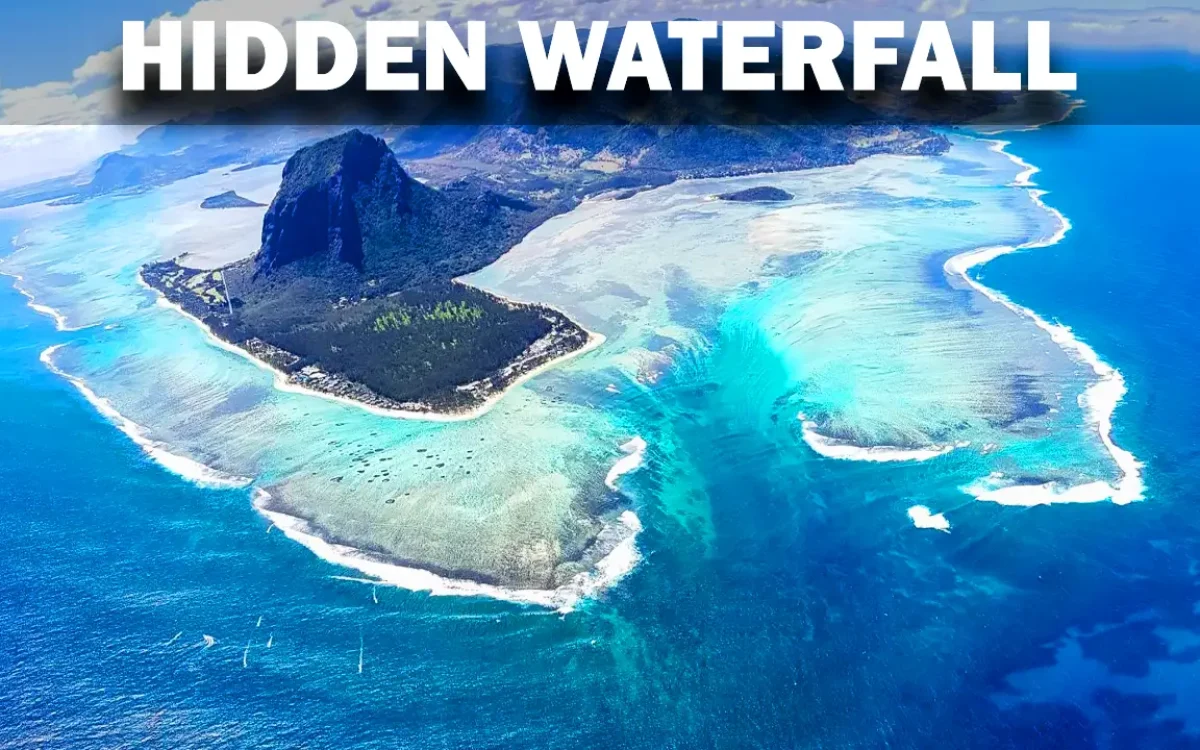Deep within the Denmark Strait lies a natural phenomenon that defies the imagination and redefines the grandeur of waterfalls.
Hidden Waterfall of Denmark
This underwater waterfall, with a drop of 3,505 meters and stretching over 160 kilometers, is an aquatic enigma that plays a crucial role in regulating the global climate.
Discovering it means entering a world where majesty meets mystery and science.
An Enigma Submerged in the North Atlantic
Unlike the famous waterfalls of Niagara or Iguazú, this natural wonder is not found on land but is hidden beneath the cold, turbulent waters of the North Atlantic.
Located in the Denmark Strait, between Iceland and Greenland, the waterfall was formed between 17,500 and 11,500 years ago when the cold Arctic waters met warmer currents.
This temperature contrast gives rise to a flow that, moving at just 0.5 meters per second, creates a calm yet immensely powerful underwater spectacle.
The fact that it is submerged and not visible to the naked eye makes it one of the most intriguing and least explored natural formations on the planet, presenting a challenge for both explorers and scientists striving to understand its dynamics.
Relevance in the Global Climate System
This underwater waterfall is impressive not only for its size but also for its impact on the global climate.
As part of the thermohaline circulation system, it helps transport cold water southward and warm water northward, regulating the distribution of heat across the planet.
This mechanism is fundamental for maintaining worldwide temperature stability, meaning that despite its hidden nature, this phenomenon directly influences the environmental balance.
Studying this waterfall has enabled scientists to better understand how ocean currents interact and how these natural processes affect the climate, revealing the interdependence between remote phenomena and life on Earth.
Accessing the Unexplored
Reaching the waterfall in the Denmark Strait poses a significant challenge. The extreme conditions of the Arctic Circle—with subzero temperatures and turbulent waters—have kept this phenomenon out of the reach of conventional tourism.
The lack of ports and the necessity of using advanced technology, such as temperature and salinity sensors and unmanned underwater vehicles, mean that only explorers and scientists with specialized resources can study this enigma.
Although the waterfall cannot be visited in the same way as popular tourist destinations, its discovery and the knowledge gained from its study have opened new perspectives in understanding the natural processes governing our planet.
This makes it a reference point for research and a symbol of the ocean’s hidden beauty.
Value and Significance of a Unique Phenomenon
The importance of this waterfall goes beyond its impressive drop. It stands as a testament to the power and complexity of nature, reminding us that even in the most remote places, there are vital processes that sustain the global climate.
For lovers of unconventional tourist spots, this underwater marvel offers a fascinating narrative about how the unexplored can influence environmental stability and enhance our understanding of the world.
Furthermore, the waterfall’s history, forged during the last Ice Age, and the scientific studies surrounding it, reinforce the idea that Earth still holds secrets capable of surprising and enriching human knowledge.
It is a perfect example of how science and exploration join forces to reveal the beauty and significance of phenomena that might initially seem insignificant due to their invisibility.
The Hidden Waterfall of Denmark
The hidden waterfall in the Denmark Strait is one of the most astonishing and enigmatic natural wonders on the planet.
Its 3,505-meter drop, its role in regulating the global climate, and the challenges its access presents make it an ideal destination for those seeking to uncover the secrets of the ocean and nature.
This underwater phenomenon invites us to reflect on the interconnectedness of natural processes and to appreciate the importance of preserving environments that, although not visible to the naked eye, are essential for the Earth’s balance.
In a world where conventional tourist destinations are becoming increasingly common, this submerged waterfall stands out for its exclusivity and mystery, opening the door to new ways of exploring and understanding the natural phenomena that shape our planet.
- You may also like:
- YouTube Channel: Travel Destinations Now






